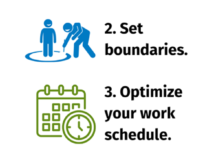A Nurse’s Review of Activity Trackers: Top Picks for Monitoring Your Health
I am always struck by the amount of people who are using wearable technology such as fitness trackers and smartwatches, but I didn’t know whether something like that would be right for me. At first, I wasn’t sure if I wanted to add another distraction into my life. I am the type of person who turns off the ringer on my cell phone and makes a concerted effort to flip it over if I am eating at a table with others. Yes, I’m also that mom who sets limits on my kids’ screen time and have often been heard uttering the phrase, “When we were growing up, we used to go outside to play every day after school until it got dark.”
However, recently my daughter asked for a Fitbit. She has been learning about healthy nutrition and has made positive changes in her diet. She wants to stay motivated with daily exercise, so that she stays in shape for soccer. I started to wonder whether a fitness tracker may be right for her age, maturity level and needs.
At the same time, I have an increased number of adult and older adult patients with fitness trackers or smartwatches who show me the data that they have compiled on their wearable technology. In one instance, a patient discovered that he had atrial fibrillation because of high heart rates on his smartwatch. Now under treatment, he still uses his smartwatch to check his heart rates, and even has a way of identifying heart rhythm irregularities using the Apple Watch Series 4 electrocardiogram monitor.
I started to ask friends, family and patients what features of their fitness trackers and smartwatches they enjoyed most, and heard a wide variety of responses. Some use it simply as a way of receiving important texts or calls when they are not carrying their cell phones. One person told me that he likes to check his pace and listen to music while he runs using his smartwatch. Another told me that she is motivated every day by “closing her rings.” I witnessed her running in place while watching television in order to achieve that goal. One patient used her smartwatch app to update her food diary and track her goal of 10,000 steps per day in order to successfully lose thirty pounds.
In addition to anecdotal evidence, there is a vast body of scientific evidence about the benefit of daily exercise on the primary and secondary prevention of many forms of diseases (LeFevre, 2014; Arena-Shurney et al., 2015; Eijsvogels, Molossi, Lee, Emery, & Thompson, 2016), including lowering cardiovascular disease mortality and cardiovascular disease (Piercy & Troiano, 2018). In short, if you want to live longer, you need to move more. For those who are cleared to undergo an exercise program (Fletcher-Williams et al., 2001), major professional society guidelines recommend at least 30 minutes of moderate-intensity exercise five to seven days per week (Fihn-Williams et. al, 2012). For obese patients, in order to achieve measurable weight loss, one must consume a set number of calories, reach the goal of 10,000 steps per day and 150 minutes or more of cardiovascular exercise per week, limit the consumption of liquid calories, and use a tool to adhere to the low-calorie intake (Acosta-Aronne et al, 2017). Thus, it is easy to see why a fitness tracker that measures 10,000 steps per day, paired with an app that tracks daily caloric intake would be an asset to any weight loss program.
I’ll review some of the most popular devices on the market below and outline what type of device to look for in terms of the functionality that you want. Wearable technology encompasses fitness trackers and smart watches.
Fitness Trackers
Fitness trackers can track your steps taken, hours of sleep, heart rate, skin temperature and perspiration levels. Some have a gyroscope to determine what position you are in (i.e., standing, sitting, swimming), GPS to track location, magnetometers to determine which direction you are going, barometers to determine your altitude, alerts for incoming calls and texts, and links to software to track your progress. All day trackers are best suited to record your steps for the day, while training trackers provide more information such as speed, pace and stride.
The major brands of fitness trackers include, Fitbit, Samsung and Garmin. There are many other brands to choose from including Huawei, Withings, Vivatar, and Under Armour.
Fitbit
Fitbit was one of the first companies to bring fitness trackers to the market. Their devices will reliably track steps and calories, offer badges for incentives and will pair with smartphone apps. They have two models for adults, the Charge 3 and Inspire, and one brand for kids, the Ace 2.
- The Fitbit Charge 3 ($139.99, 3.4/5 stars, Amazon), according to Tech Radar (Peckham, 2019) and PC Mag (Colon, 2019), is one of the best fitness trackers you can buy. It has a heart rate and activity tracker, guided breathing, swim tracking, is waterproof, has a battery life of around 4-5 days, and is compatible with Android, iOS and Windows. The FitBit Charge 3 Special Edition gives you Fitbit Pay compatibility as well.
- The Fitbit Inspire HR ($95.00, 3.8/5 stars, Amazon) has heart rate tracking, activity tracking, sleep monitoring, and guided breathing exercises. The battery life is around 5 days. It is waterproof but doesn’t come with any swim-tracking functions. It is a more affordable option if you don’t need swim tracking.
- The Ace 2 ($99.00, 3.6/5 stars, Amazon) tracks steps, activity, sleep and shows the stats on a bright display. The tracker rewards kids for hitting goals with celebratory messages and achievement badges. It is water resistant to 50 M, has an adjustable wristband, syncs wirelessly to iOS and Android devices. In the Fitbit app, parents can create an account for their child under a family account. The bands are interchangeable. Kids can express themselves by switching their band to fit their style and mood (Amazon: Fitness Tracker, retrieved 8/31).
Samsung
Samsung’s fitness tracker line includes the Galaxy Fit ($99.99, 3.7/5 stars, Amazon), Gear Fit ($82.99, 3.6/5 stars on Amazon), and the Gear Fit2 Pro ($129.99- $199.99, 3.4/5 stars, Amazon).
- Their most basic model, Gear Fit, has a Heart Rate Sensor, text messaging, notifications of emails, SMS, incoming calls and works with 3rd party apps.
- The Gear Fit2 Pro is an excellent fitness tracker that accurately records runs and workouts with the added benefit of being waterproof up to 5 ATM of pressure.
- The Galaxy Fit monitors your heart rate and sleep and has automatic fitness tracking that detects walking, running, hopping, and cycling (Amazon: Fitness Trackers, 2019; Samsung, 2019).
Garmin
Garmin’s fitness trackers are known for the accuracy of their GPS readings, as well as their durability and versatility across many different sports. Their line includes the Vivosmart®4 ($129.99, 3.6/5 stars, Amazon), Vivosport® ($169.99, 3.4/5 stars, Amazon), Vivofit ®4 ($79.99), Vivofit® jr. (3.5/5 stars, Amazon), Vivofit® jr. 2 ($69.99, 3.7/5 stars, Amazon), and Approach® X40 ($249.99, 4.1/5 stars, Amazon).
- Vivosmart® 4 is an activity and fitness tracker with pulse oximetry, heart rate monitor, sleep monitoring, all day stress tracking, and relaxation breathing timer. It has alerts for calls and text messages.
- The Vivosport® is similar in function to the Vivosmart®, but adds GPS tracking.
- The Vivofit® Jr. watch is a swim friendly (5 ATM water resistance) kids activity tracker which tracks steps, sleep and the daily 60 minutes of recommended activity. It also offers rewards and challenges and is a great way to get kids moving (Amazon: Fitness Trackers, 2019; Sawh, 2019).
- Vivofit Jr 2 ®is similar to the Vivofit Jr but has added a color screen, options for selecting Disney bands which stretch and adjust like a typical watch (fit wrists up to 147 mm). It also comes with access to play an adventure on the Vivofit®Jr app.
- Approach® X40 is a GPS golf band and activity tracker. It has a high-sensitivity GPS which acquires satellites quickly to show distances to greens, hazards and doglegs, even under tree cover. It has a round analyzer which measures shot distances with auto-recording for post-round analysis on your Garmin connect account.
Smartwatches
Smartwatches are wrist worn smartphones that run on operating systems such as Google’s Android Wear, Samsung’s Tizen, and Apple’s Watch OS. They have the capabilities of an activity tracker, plus the ability to perform advanced tasks such as phone calls, text messaging, social-network updates, GPS tracking, and pairing with apps on your smartphone or computer. Models are constantly being streamlined to be sleeker, lighter and more technologically advanced (Fitness Trackers Buying Guide, 2018). The major brands of smartwatches include Samsung, FitBit, Garmin and Apple.
Samsung
Samsung’s smartwatch line includes the Galaxy Watch (42mm-46 mm; Bluetooth or 4G LTE; $279.99-$369.99, approximately 4.2/5 stars, Amazon), Galaxy Watch Active (40mm, $199.99, 4/5 stars, Amazon), Gear S3 Classic and Frontier (around $249.99, 4.2/5 stars, Amazon), and Gear Sport ($149.00-$199.99, 3.8/5 stars, Amazon).
- The Samsung Galaxy Watch offers a stylish, customizable watch face, notifications, sleep cycle and calorie tracking, guided breathing exercises, individual workout detection, GPS navigation50 m water resistance, built-in speakers/microphone, interchangeable bands, a wireless charger, pairs with both Android and iOS via Bluetooth or 4G, streams music, and has the ability to use Samsung Pay.
- The Samsung Galaxy Watch Active has a sleeker appearing face and has all the capabilities as the Galaxy Watch except built-in speakers/microphone and can also be either Bluetooth compatible or Android/iOS compatible. It is lightweight and has a good battery life. It detects up to 6 exercises while tracking up to 39 more, and it can monitor sleep. At a lower price point, it is considered the Best Android Smartwatch by Android Central (Amazon: Smartwatches, 2019; Samsung, 2019).
- Gear Sport has the ability to track heart rate and calories, is water resistant up to 50m, offers notifications, has GPS navigation, Samsung Health (allows tracking of wellness metrics), Samsung Pay, Samsung Connect (allows you to control your compatible smart devices and appliances, including lights, door locks and television), and is either Bluetooth or Android/iOS compatible.
Fitbit
Fitbit’s smartwatch line includes Ionic, Versa and the newly released Versa 2.
- The Ionic ($228.95, Amazon) uses OS technology, is compatible with the Android and iOS, has Wi-Fi and Bluetooth connectivity, has a two to three-day battery duration and is water resistant up to 50M.
- The Versa ($169.95, 3.7/5 stars) has all of the features of the Ionic, but at a lower price point, a sleeker appearance and with some added technology such as Fitbit Pay. It does not have advanced GPS, so although it can track activity and steps, it can’t track location. Some additional attractive features include the ability to store and play 300 songs, get call, text, calendar and smartphone notifications, track sleep stages, and track sports and workouts using SmartTrack.
- The newest model, the Versa 2 ($199.95, Amazon) has all of the same activity tracking, call, text, calendar and smartphone app notifications, but has a few niche built-in capabilities. The Versa 2 uses the Amazon Alexa to get news and information, check the weather, set timers and alarms, and control your smart home devices through the sound of your voice. It uses Sleep Score to help you understand your sleep quality and tracks your time in light, deep and REM sleep stages. Also, with a subscription, you can use your Spotify app, download Pandora stations and add Deezer playlist (Amazon: Smartwatches, 2019; Peckham, J., 2019).
Garmin
Garmin’s smartwatch line include: Forerunner® 945 ($599.99 and up), Forerunner® 245/245 Music ($299.00 and up), Forerunner® 45/45S ($199.99 and up), Forerunner® 645/645 ($399.99 and up), Vivoactive® 3 Series ($249.99 and up), Vivomove® HR ($199.99 and up), Approach® S40 ($299.99 and up), quatix® 5 Series ($549.99 and up), and the Fenix® 5 Plus Series ($599.99). Their watches are great for runners who are looking for GPS technology, distance, pace, time, calories, splits and heart rate monitoring. Their advanced watches offer tracking features for many sports, such as hiking, climbing, skiing, swimming, marathon training, triathlon, golf and more.
- Most models aside from the Vivomove® HR have GPS technology.
- All models have Garmin Pay and music player support.
- The Forerunner® 45 is best for beginners.
- The Vivoactive®3 combines all of the best features of a running watch and a smartwatch at a moderate price point.
- The Fenix® 5 offers the most sophisticated metrics for VO2 Max, race prediction, stress scores, Training Effect and Training Status (Amazon: Smartwatches, 2019; Sawh, 2019).
Apple
Apple’s smartwatch line includes Apple Watch Series 3 ($199.00, 4.6 stars/5, Amazon), Apple Watch Series 4 (from $399.00, 4.7/5 stars, Amazon), Apple Watch Nike + (from $399.0, 4.7/5, Amazon), and Apple Watch Hermes (from $1299, no rating available), and the newest Series 5 which was unveiled in September 2019 ($399 +$100 for the cellular plan; 44 mm for $499/$520 LTE; Stainless Steel $699; Titanium $799; White Ceramic $1299, Amazon) .
- The most popular feature of the Apple Watch is the ability to visualize your goals by “closing your rings.” You also have the ability to track your runs with GPS, and advanced features like cadence and pacing. You may pair your watch with compatible gym equipment, stream music and podcasts. Like other smartwatches, you may also receive notifications, calls and texts.
- All of the Apple watches have a special feature for monitoring irregular heart rate rhythms, like atrial fibrillation, and have an emergency SOS to summon for help.
- The Hermes version offers the addition of sophisticated and sleek styling.
- The Nike+ version is great for runners who want to access different workouts and experts through the Nike Training Club.
- The Apple Watch Series 4 version has a larger display than prior models, a re-engineered Digital Crown with haptic feedback which delivers a click like feel as you scroll and allows you to use the ECG app simply by touching the Digital Crown with your finger.
- The latest Series 5 touts a screen that never turns off (for the same battery life), retina display, a built in magnetometer compass, new watchOS software (which is available as an upgrade to the Series 3 and 4), cycle tracking (for logging period flow and symptoms), a calculator app, heart rhythm monitoring, a noise app, advanced metrics for exercising, the Watch App store so that you no longer need to install apps from your iPhone, and the ability to add cellular so that you no longer have to bring your phone with you while you’re out.
- These watches are often the choice for individuals who want to pair their workouts with their other apple devices and have the ability to use their messaging and access apps across all of their devices (Amazon: Apple Watch, 2019; Apple, 2019).
Fitness trackers and smartwatches have a wide price range and offer many features at the upper range that may not be necessary if you are just looking for a device that tracks your heart rate. However, if you are set on a device that has sophisticated technology like GPS and that pairs with music and health apps, then you may be better off investing more up front. There is a growing list of fitness trackers and smartwatches from which to choose. However, in my opinion, the three fitness trackers that have the most functionality and are moderately priced (starting at $129.00) are the Fitbit Charge 3, Garmin Vivosmart, and the Samsung Gear Fit2 Pro. The three smartwatches that lead the pack in my opinion are the Apple Watch Series 5, the Fitbit Versa and the Samsung Galaxy Watch Active. The Apple Watch Series 5 is my top pick for nurses right now due to its sleek look, the ability to pair with other apple technology, and the capability for advanced health monitoring.
References:
Acosta, A., Streett, S., Kroh, M.D., Cheskin, L.J., Saunders, K., Kurian, M.…& Aronne, L. (2017). White Paper AGA: Power- Practice Guide on Obesity and Weight Management, Education, and Resources. Clinical Gastroenterology and Hepatology, 15 (631-649).doi: 10.1016/j.cgh.2016.10.023
Amazon: Apple Watch. Retrieved August 31, 2019 from https://www.amazon.com/Apple-Watch
Amazon: Smartwatches. Retrieved August 31, 2019 from https://www.amazon.com/s?k=smartwatches&i=sporting&ref=nb_sb_noss_1
Amazon: Fitness trackers. Retrieved August 31, 2019 from https://www.amazon.com/sk=fitness+trackers&i=sporting&ref=nb_sb_noss_1
Apple.com: Watch. Retrieved August 31, 2019 from https://www.apple.com/watch/
Apple.com: Watch. Retrieved October 4, 2019 from https://www.apple.com/watch/
Arena, R., Guazzi, M., Lianov, L., Whitsel, L., Beraa, K., Lavie, C.J., Kaminsky, L., Williams, M., Hivert, M.F., Franklin, N.C., Myers, J., Dengel, D., Lloyd-Jones, D.M., Pinto, F.L.., Cosentino, F., Halle, M., Gielen, S., Dendale, S., Niebauer, J., Pelliccia, A., Giannuzzi, P., Corra, U., Piepoli, M.F., Guthrie, G., & Shurney, D. (2015). Healthy Lifestyle Interventions to Combat Noncommunicable Disease- A Novel Nonhierarchical Connectivity Model for Key Stakeholders: A Policy Statement from the American Heart Association. Mayo Clinic Proceedings, 90(8):1082-103. doi: 10.1016/j.mayocp.2015.05.001.
Colon, A., (2019, June 18). Retrieved August 31, 2019 from PC Mag. https://www.amazon.com/s?k=fitbit+charge+3&crid=RMWUCV5QSS06&sprefix=fitbitcharge+%2Caps%2C149&ref=nb_sb_ss_sc_1_13
Eijsvogels T.M, Molossi S., Lee D.C., Emery M.S., & Thompson P.D. (2016). The Amount of Exercise to Reduce Cardiovascular Events, Journal of the American College of Cardiology, 67(3):316-29. doi: 10.1016/j.jacc.2015.11.034.
Fihn, S.D., Gardin, J.M., Abrams, J., Berra, K., Blankenship, J.C., Dallas, A.P., Douglas,… Williams, S.V. (2012). 2012 ACCF/AHA/ACP/AATS/PCNA/SCAI/STS guideline for the diagnosis and management of patients with stable ischemic heart disease: executive summary: a report of the American College of Cardiology Foundation/American Heart Association task force on practice guidelines, and the American College of Physicians, American Association for Thoracic Surgery, Preventive Cardiovascular Nurses Association, Society for Cardiovascular Angiography and Interventions, and Society of Thoracic Surgeons. Circulation. 126(25):3097-137. doi: 10.1161/CIR.0b013e3182776f83.
Fitness Trackers Buying Guide. (2018, Nov, 20). Retrieved August 31, 2019, from Consumer Reports: https://www.consumerreports.org/cro/fitness-trackers/buying-guide/index.htm
Fletcher, G.F., Ades, P.A., Kligfield, P., Arena, R., Balady, G.J., Bittner, V.A., Coke,…Williams, M.A, American Heart Association Exercise, Cardiac Rehabilitation, and Prevention Committee of the Council on Clinical Cardiology, Council on Nutrition, Physical Activity and Metabolism, Council on Cardiovascular and Stroke Nursing, and Council on Epidemiology and Prevention. (2012). Exercise standards for testing and training: a scientific statement from the American Heart Association, Circulation. 128(8):873-934. doi: 10.1161/CIR.0b013e31829b5b44
Lefevre, M.L., U.S. Preventive Services Task Force. (2014). Behavioral counseling to promote a healthful diet and physical activity for cardiovascular disease prevention in adults with cardiovascular risk factors: U.S. Preventive Task Force Recommendation Statement. Ann Internal Medicine, 161(8): 587-93. doi: 10.7326/M14-1796
Peckham, J., (2019, Aug 20). Retrieved August 31, 2019 from https://www.techradar.com/search?searchTerm=wearables+best+fitbit+which+is+right+for+you
Piercy KL, Troiano RP. (2018). Physical Activity Guidelines for Americans From the US Department of Health and Human Services. Circulation: Cardiovascular Quality and Outcomes, 11(11): e005263. doi: 10.1161/CIRCOUTCOMES.118.005263.
Samsung: Wearables. Retrieved August 31, 2019 from https://www.samsung.com/us/mobile/wearables/
Sawh, M., (2019, August 30) Best Garmin watch 2019: Perfect choices for runners, cyclists and more. Retrieved August 31, 2019 from Wareable. https://www.fitrated.com/gear/wearables/best-garmin-fitness-trackers/






